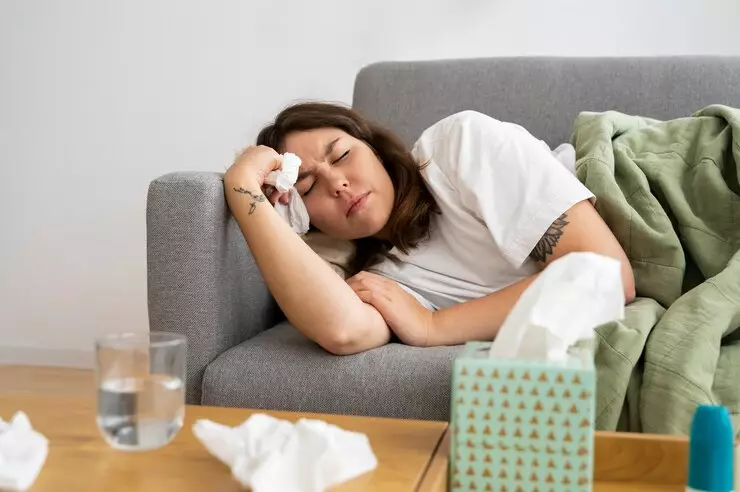Headline: freepik.com
Brilio.net - Leptospirosis or commonly known as Weil's disease is a disease transmitted by rat urine. Leptospirosis usually occurs during floods because it spreads more. You need to know that leptospirosis is a zoonotic disease caused by infection with spirochete bacteria from the genus Leptospira, especially the species L. interrogans.
Quoting from the World Health Organization or WHO, it is estimated that there are more than 1 million cases of severe leptospirosis every year throughout the world, with around 58,900 deaths. Leptospirosis occurs worldwide, but is most common in tropical and subtropical areas. Countries in Southeast Asia, Africa, Central America, and the South Pacific Islands have higher incidence rates.
Meanwhile in Indonesia, according to WHO in 2019, 920 cases of leptospirosis were reported with 122 deaths. These cases were reported from 9 provinces (Banten, DKI Jakarta, West Java, Central Java, DI Yogyakarta, East Java, Maluku, South Sulawesi and North Kalimantan). However, the number of reported cases is very small compared to the incidence of leptospirosis in Indonesia, the annual morbidity of leptospirosis in the Indonesian population is estimated at 39.2 per 100,000 people.
From the explanation above, it can be concluded that leptospirosis cannot be underestimated. For this reason, you have to learn more about the symptoms, causes and ways to treat leptospirosis. Therefore, brilio.net has summarized it from various sources, Tuesday (30/7).
Symptoms of leptospirosis

photo: freepik.com
Leptospirosis is a bacterial disease that can attack humans and animals. This disease is transmitted through contact with water or soil contaminated with the urine of infected animals. Symptoms of leptospirosis are often non-specific and similar to other diseases, which can make diagnosis difficult. However, you can see the symptoms that can be recognized as a result of leptospirosis as follows:
1. Sudden Fever.
2. Weak.
3. Red eyes.
4. Yellowness of the skin.
5. Headache.
6. Calf muscle pain.
Causes of leptospirosis

photo: freepik.com
According to the journal article Adler, B., & de la Pea Moctezuma, A. (2010). Leptospira and leptospirosis. Veterinary microbiology, 140(3-4), 287-296., states that leptospirosis is caused by pathogenic bacteria from the genus Leptospira, which belongs to the family Leptospiraceae and the order Spirochaetales.
Specifically, the species most frequently associated with disease in humans is Leptospira interrogans. However, recent genomic studies have identified more than 300 Leptospira serovars that can cause infections, grouped into at least 20 different species.
Leptospirosis can infect various mammal species, including mice, dogs, cattle, pigs and horses. However, rats are considered the main and most epidemiologically significant cause (cases in the community). These animals can be chronic carriers and excrete the bacteria in their urine without showing symptoms of disease.
How to treat leptospirosis

photo: freepik.com
Treating leptospirosis requires rapid diagnosis and appropriate treatment. Here are some steps you can take to treat leptospirosis:
1. Early diagnosis and treatment with antibiotics
Early diagnosis is essential for effective treatment. If symptoms of leptospirosis are identified, such as fever, headache and muscle aches, immediately consult medical personnel.
Antibiotics are the main treatment for leptospirosis. Medications such as doxycycline or penicillin are usually prescribed to stop the growth of bacteria. Treatment with antibiotics should be started as soon as possible, ideally within the first few days of symptoms appearing, to reduce the risk of complications.
2. Symptomatic treatment
In addition to antibiotics, symptomatic treatment is needed to treat the symptoms that appear.
Such as treating fever and pain with antipyretics and analgesics. Apart from that, rehydration is also important to replace lost body fluids, especially if vomiting or diarrhea occurs. Make the most of it by getting enough rest to help the body recover.
3. Prevention of complications
It is important to monitor the development of symptoms and avoid serious complications, as Weil's disease can be life-threatening. Close medical supervision helps in preventing further organ damage.
4. Prevention of transmission
Prevention of transmission of leptospirosis involves taking steps to reduce contact with sources of infection and maintaining personal hygiene. Avoiding direct contact with water or soil that may be contaminated with animal urine is an important first step.
In areas known to be endemic for leptospirosis, it is highly recommended to use protection such as gloves, boots and protective clothing when working in high-risk environments, such as rice fields, ponds or places flooded with water. Additionally, keeping the environment clean, such as controlling rat and other rodent populations, can help minimize sources of infection.
Prevention also includes good personal hygiene practices, such as washing hands thoroughly with soap and water after contact with soil or water, and before eating. For those of you who live in or visit vulnerable areas, you should avoid consuming water and food that may be contaminated. Boil drinking water or use sterilized water, and make sure food is cooked well.
In addition, vaccinating pets such as dogs can reduce the risk of transmission through infected pets. With the right preventive measures, the risk of contracting leptospirosis can be minimized, keeping yourself and those around you healthy.
(brl/far)